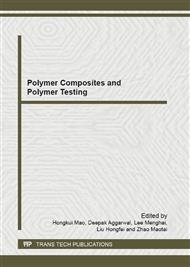[1]
Xin Gu. Numerical Simulation of Shell-and-tube Heat Exchanger and Research on Sideling-flow Heat Exchanger. [D]. ZhengZhou city: ZhengZhou univercity,2006, 19-22.
Google Scholar
[2]
Yi Miao, JiaZhen Pan, Jian Min, et al. Large Eddy Simulation of Mixing Process in Stirred Tank with Rushton Turbine [J], Journal of East China University of Science and Technology(Natural Science Edition, 2006,32(5):623-628.
Google Scholar
[3]
M. Tyagia. Simulation of laminar and turbulent impeller stirred tanks using immersed boundary method and large eddy simulation technique in multi-block curvilinear geometries [J], Chemical Engineering Science, 2007, 62: 1351-1363.
DOI: 10.1016/j.ces.2006.11.017
Google Scholar
[4]
J. Pan, E. Loth. Reynolds-averaged Navier-Stokes simulations of airfoils and wins with ice shapes[J], Journal of Aircraft, 2004, 41(4): 879-891.
DOI: 10.2514/1.587
Google Scholar
[5]
V. Michelassi, J. G. Wissink, W. Rodi. Direct numerical simulation, large eddy simulation and unsteady Reynolds-averaged Navier-Stokes simulations of periodic unsteady flow in a low-pressure turbine cascade: A comparison [J], Proceedings of the Institution of Mechanical Engineers, Part A: Journal of Power and Energy, 2003, 217(4): 403-412.
DOI: 10.1243/095765003322315469
Google Scholar
[6]
Ting'an Zhang, Qiuyue Zhao, Zhihe Dou, et al. internal loop multi-tubular digestion reactor [P]. ZL 200510047338. 3.
Google Scholar
[7]
Qiuyue Zhao. Design and physical and numerical simulation on flow characteristic of multi stirred tubular reactor [D]. ShenYang city: Northeastern University. 2008, 33-51.
Google Scholar
[8]
Luo J V, Gosman A D, Issa R I, et al. Fitzgerald M K. Full flow field computation of mixing in baffled stirred reactors [J]. Trans IChemE 1993, 71A: 342-344.
Google Scholar
[9]
Luo J V, Issa R I , Gosman A D. Prediction of impeller induced flows in mixing vessels using multiple frames of reference[J]. IChemE Symp Ser 163, 1994, 549-556.
Google Scholar
[10]
Chengyao Wang, Zhenghua Wang, Xiaohui Yang. Computational fluid dynamics and parallel algorithm [M]. Changsha city, Press of National University of Defense Technology, China, (2000).
Google Scholar
[11]
Guozhong Zhou; Yingcen Wang and Litian SHI. CFD study of mixing process in stirred tank [J]. Journal of Chemical Industry and Engineering(China), 2003, (54)7, 886-890.
Google Scholar


